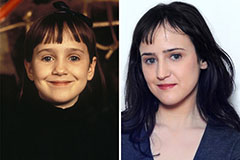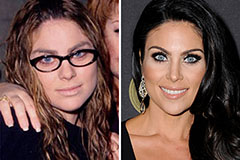The Comprehensive Eye Exam: What to Anticipate During Your Visit to the Eye Physician
A browse through to the eye physician for a comprehensive eye examination is greater than a regular check-up; it is an essential action in guarding your aesthetic health and wellness. From the first discussion of your medical background to the precision of the visual skill examination, each component of the exam serves a specific objective. What specifically occurs during the eye health assessment, and exactly how does it influence the prescription procedure? Understanding these elements is crucial for those who wish to keep optimal eyesight. As we explore each part, the relevance of follow-up recommendations will also come to be clear.
Initial Appointment
The first assessment throughout an eye examination works as a critical structure for recognizing a patient's aesthetic health demands. This stage sets the tone for the entire examination procedure, permitting the eye doctor to collect necessary info concerning the patient's case history, way of life, and particular vision problems. By thoroughly assessing any kind of pre-existing problems, medicines, or previous surgical procedures, the eye care professional can tailor the exam to deal with specific demands successfully.

Furthermore, the first assessment is a possibility for patients to articulate any problems or inquiries, fostering a collaborative connection with their doctor. This communication not only makes sure that the client really feels notified and comfy but additionally encourages them to participate actively in their eye wellness monitoring. Jointly, these discussions make it possible for the eye doctor to devise a customized evaluation strategy, guaranteeing optimum treatment and specific medical diagnosis.
Aesthetic Acuity Examination
Starting the core parts of an eye assessment, the aesthetic skill test is developed to assess the intensity and quality of a person's vision. This important assessment aids establish just how well an individual can determine letters or icons at a standardized range, usually utilizing a Snellen graph (Eye Doctor Optometrist). The chart makes up rows of letters that reduce in size inside out, with the client placed at a traditional range of 20 feet
During the examination, the client is asked to cover one eye and review aloud the smallest line of letters they can see clearly. This procedure is repeated for the other eye. The outcomes are videotaped as a fraction, with 20/20 vision showing normal visual skill-- where the individual can see at 20 feet what an individual with regular vision can see at that distance.
The visual acuity examination also determines possible refractive mistakes such as myopia, hyperopia, or astigmatism, which may necessitate corrective lenses. By establishing a baseline of aesthetic efficiency, the examination is a vital analysis device that aids the eye care expert in establishing an appropriate treatment strategy tailored to the patient's unique aesthetic requirements.
Eye Wellness Analysis
Adhering to the visual skill examination, a detailed eye health and wellness assessment is carried out to guarantee the general well-being of the eyes. This essential section of the eye examination includes a complete analysis of both the outside and interior frameworks of the eye. The ophthalmologist or optometrist starts by analyzing the eyelids, cornea, conjunctiva, and sclera for any kind of indicators of infection, swelling, or irregularities. Utilizing specialized equipment like a slit lamp, the specialist acquires an amplified view of the eye's anatomy, enabling thorough assessment.
With the use of ophthalmoscopy or fundus digital photography, the retina, optic nerve, and blood vessels are meticulously assessed. In many situations, student dilation is carried out to boost exposure of the inner eye structures, although this may result in momentary light level of sensitivity for the patient.
Furthermore, intraocular stress is gauged to evaluate for glaucoma risk. This is my sources typically done using tonometry, which can discover elevated pressure levels that may recommend possible damages to the optic nerve. Jointly, these analyses create an extensive evaluation to keep eye wellness.
Refraction and Prescription
Just how does one guarantee ideal vision? A critical action exists in the process of refraction and acquiring an accurate prescription. Refraction is a sophisticated procedure performed by eye treatment experts to establish the specific lens power required to deal with refractive mistakes such as nearsightedness, astigmatism, hyperopia, and presbyopia. The objective of this treatment is to analyze just how light bends as it goes through the eye, permitting the practitioner to identify whether corrective lenses are necessary for boosted aesthetic acuity.
During the refraction procedure, the client is asked to check out a phoropter, a gadget that contains numerous lenses. The professional will methodically alter these lenses and ask the individual to compare clearness in between choices till the most effective possible vision is achieved. This treatment is important in crafting an accurate prescription that defines the appropriate lens power for eyeglasses or get in touch with lenses.
The prescription originated from this treatment not just optimizes vision however likewise works as a foundation for selecting suitable restorative glasses. It is necessary to ensure that prescriptions are frequently upgraded, as changes in vision can happen with time, highlighting the significance of More about the author regular eye exams. This precise focus to detail assists keep clear, comfortable vision in day-to-day live.
Follow-Up Recommendations

Throughout a follow-up browse through, the eye doctor will certainly perform a collection of tests to review visual acuity and check for any type of adjustments in vision that might require an update to the prescription. Additionally, the follow-up offers an opportunity to review any type of discomfort or issues experienced with present eyeglasses. Adjustments can be made to ensure convenience and efficacy, whether with lens alteration or frame adjustments.
For individuals with ongoing problems such as glaucoma, diabetes-related eye issues, or macular deterioration, even more frequent follow-ups might be required. These consultations are crucial for handling and possibly slowing down the progression of eye illness. Adhering to these suggestions can considerably contribute to maintaining aesthetic wellness and preventing long-term difficulties.
Verdict
The thorough eye test is a vital process for keeping visual health and wellness, encompassing a thorough analysis of clinical background and vision problems. Trick components consist of the aesthetic skill test, which assesses eyesight clearness, and the eye health evaluation, which examines the overall condition of the eyes. Refraction examinations assist determine the specific lens prescription required for optimum vision adjustment. Follow-up recommendations supply guidance for recurring eye treatment, making sure that any possible concerns are look at this site addressed without delay and effectively.
A visit to the eye doctor for a comprehensive eye test is more than a routine check-up; it is a critical action in securing your visual wellness.Kicking off the core components of an eye exam, the visual skill test is developed to assess the sharpness and clarity of a person's vision.Adhering to the visual acuity examination, a detailed eye health and wellness evaluation is performed to make certain the overall wellness of the eyes. These visits enable the eye care expert to keep an eye on changes in vision, upgrade prescriptions, and examine the overall wellness of the eyes. Trick parts consist of the aesthetic acuity test, which assesses vision quality, and the eye wellness analysis, which takes a look at the general condition of the eyes.
 Mara Wilson Then & Now!
Mara Wilson Then & Now! Marla Sokoloff Then & Now!
Marla Sokoloff Then & Now! Matilda Ledger Then & Now!
Matilda Ledger Then & Now! Justine Bateman Then & Now!
Justine Bateman Then & Now! Nadia Bjorlin Then & Now!
Nadia Bjorlin Then & Now!